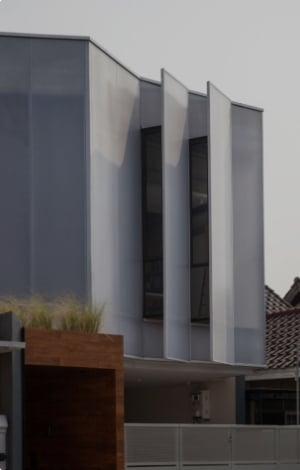Coliving as Urban Commons: A Regenerative Form of Future Communities




Across Southeast Asia, where dense urban environments and shifting demographics collide, a new form of housing is emerging — coliving. Far from being just a lifestyle trend, coliving is a tested strategy for building inclusive, adaptive, and socially resilient communities — a solution to the unique needs of young professionals, digital nomads, and, in some societies, an aging population.
What makes coliving truly relevant today is its responsiveness to change. As cities confront affordability crises, shifting demographics, and the need for greater social cohesion, housing models must be not only efficient but empathetic. Coliving offers exactly that — a structure flexible enough to serve the individual, yet communal enough to serve the collective.

A recent case in Hong Kong illustrates coliving’s relevance. Henderson Land’s Tai Po redevelopment, originally a private residential project, was converted into off-campus student housing for the local university, CUHK. The complex now offers rooms at an affordable price, with shared kitchens, common areas, and study spaces — directly addressing Hong Kong’s severe student housing shortage. This adaptive reuse strategy turned underperforming real estate into an accessible, high-demand community space tailored to the needs of a specific user group.
The future of urban resilience isn’t built on concrete alone. It is shaped by the invisible threads of community, interdependence, and shared purpose. Coliving offers a framework for these threads to weave into something tangible — and evolving.
Yimei Chan, Design Principal of LOD, with a portfolio spanning from China to North America and a new project now in the Middle East, has explored this firsthand through several initiatives.
A recent coliving pilot in Shanghai, the Mofang Apartment 3.5 Prototype, transformed a disused office into a multi-generational living lab, integrating young professionals, creatives, and older adults. Within months, residents self-organized shared meal plans, cultural nights, and mental fitness circles — an organic expression of community within lived-in architecture.

LOD’s experience also demonstrates how adaptive reuse can be a powerful tool. The MORE Residence Beijing Langyuan Station occupies the site of a former textile factory from the 1970s, which had lain abandoned for years. The innovative design concept employs weaving as a powerful metaphor, transforming this historic industrial space into a sophisticated boutique apartment hotel that elegantly bridges the neighborhood’s past, present, and future. The project has been reimagined as a vibrant coliving space catering to local and international creative digital nomads.
At its heart, coliving reimagines housing as a form of urban commons.
In another project, the Hangzhou Ascott LYF Co-living Apartment, LOD prioritized understanding the evolving needs of next-generation travelers, crafting a hybrid design solution that merges exploratory journeys with branded experiences. By incorporating iconic local elements, playful features, and interactive spaces, the design fosters social connections while encouraging shared creativity and engagement — transforming travel into a dynamic, memorable experience.

Coliving offers an answer to rising living costs, shrinking household sizes, and growing social isolation. By fostering shared spaces — communal kitchens, work zones, and activity hubs — it nurtures daily interactions that naturally evolve into support networks. This isn’t just about efficiency; it’s about belonging.
Coliving, in this context, becomes a regenerative urban force, not just a typology.




 Australia
Australia
 New Zealand
New Zealand
 Philippines
Philippines
 Hongkong
Hongkong
 Singapore
Singapore
 Malaysia
Malaysia







